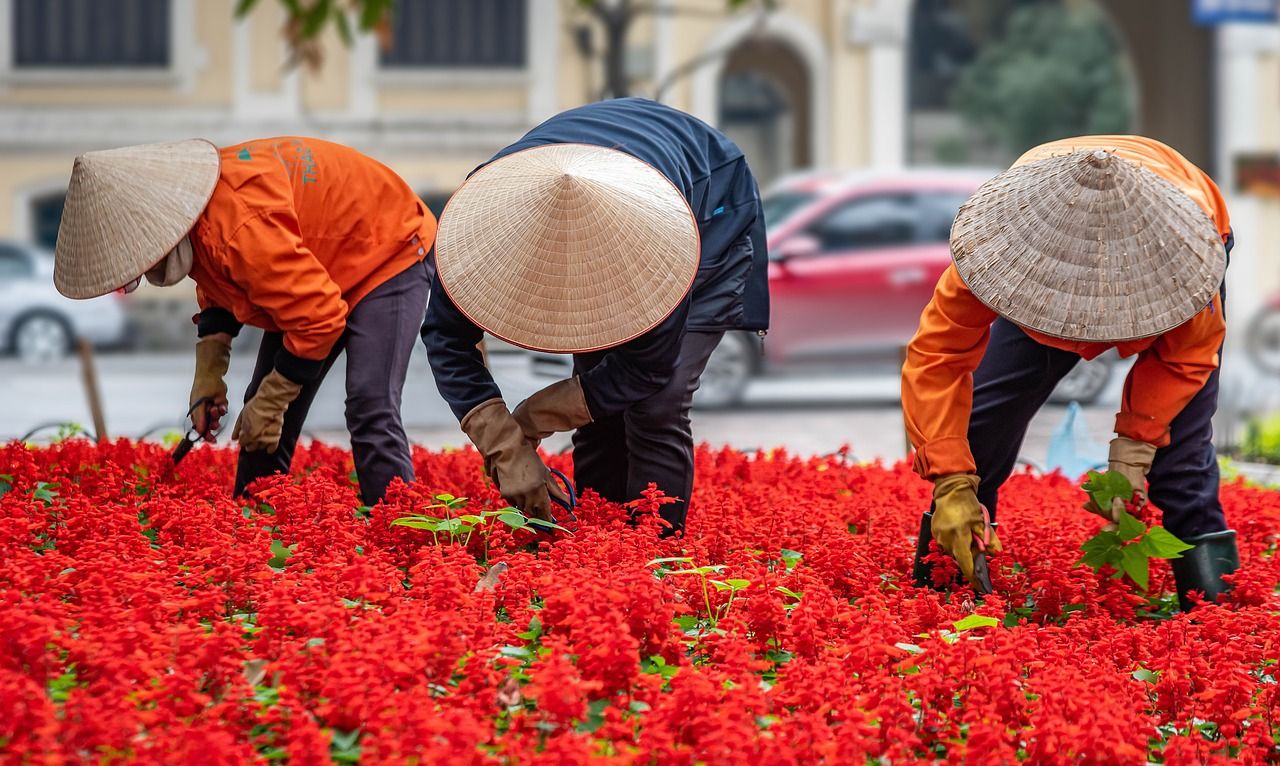


Introduction to Hanoi
Hanoi is located in the northern part of Vietnam and serves as both a cultural hub and economic center for Northern Vietnam. Visitors are drawn to Hanoi’s blend of Vietnamese culture with French colonial influence, resulting from its history as capital city during various periods under French rule. This fusion creates an atmosphere that combines old traditions in harmony with modern amenities, making it worthwhile destination for tourists seeking a mix of experiences.
—
Key Attractions and Points of Interest
Two significant points of interest within Hanoi are the Imperial Citadel of Thăng Long and Ho Chi Minh Mausoleum. The Imperial Citadel is located in central Hanoi, showcasing Vietnam’s imperial history through its architecture and artifacts. Visitors can expect to see an array of historical buildings from different eras, ranging from ancient temples to modern skyscrapers.
Ho Chi Minh Mausoleum houses the remains of Ho Chi Minh himself, a leader who contributed greatly towards Vietnam’s independence. It serves as both tomb and memorial to Ho Chi Minh’s legacy for Northern Vietnamese history buffs seeking insights into Ho Chi Minh’s life.
The Imperial Citadel of Thăng Long is another attraction worth exploring due to its historical significance dating back centuries ago when Vietnam was ruled by dynastic kings. Visitors can expect to see ancient temples, palaces and shrines reflecting Vietnamesong culture during these periods. Both attractions require visitors to wear modest clothing as a sign of respect for local customs and traditions.
—
Cultural and Historical Context
Hanoi’s cultural heritage is shaped by its history under French rule in conjunction with Vietnamese traditions, resulting from Vietnam’s imperial past. This fusion creates an atmosphere that combines old traditions with modern amenities, making it worthwhile destination for tourists seeking a mix of experiences. Local customs and etiquette are influenced by Confucianism, Buddhism, ancestral worship and Taoist philosophy which visitors should be mindful of when visiting Hanoi’s attractions.
—
Practical Information for Visitors
Visitors in Vietnam generally need to dress modestly due to local customs. When dining or shopping at markets, it is customary to bargain with vendors who may offer lower prices than advertised. Navigating the area can be challenging because of language barriers; however, Vietnamese people are welcoming towards tourists and enjoy showing appreciation for their cultural backgrounds through artifacts displayed in museums or temples dedicated to different dynastic kings from Vietnam’s imperial past.
—
Conclusion: Why Hanoi is Worth a Visit
Hanoi offers visitors an opportunity to witness history firsthand by visiting ancient shrines, palaces and temples that date back centuries ago when Vietnam was ruled by dynastic kings or French rule in conjunction with Vietnamese traditions. Visitors can expect insights into Ho Chi Minh’s life who contributed greatly towards Vietnam’s independence through his legacy displayed within Hanoi itself – making it worthwhile destination for tourists seeking a mix of experiences.
Source: Hanoi Wikipedia
🇰🇷 한국어 보기 (View in Korean)
하노이 소개
하노이는 베트남 북부에 위치하고 있으며 베트남 북부의 문화 허브 및 경제 센터 역할을합니다. 방문객들은 하노이의 베트남 문화에 대한 혼합으로 프랑스 식민지의 영향을 미쳤으며, 프랑스 규칙에 따라 다양한시기에 수도로서의 역사로 인해 발생합니다. 이 융합은 오래된 전통을 현대의 편의 시설과 조화롭게 결합시키는 분위기를 조성하여 혼합 된 경험을 찾는 관광객들에게 가치있는 목적지를 만듭니다.
—
주요 명소 및 관심 지점
하노이 내에서 두 가지 중요한 관심 지점은 롱과 호치민 묘소의 제국 성채입니다. 제국의 성채는 하노이 중심부에 위치하고 있으며 건축과 유물을 통해 베트남의 제국 역사를 보여줍니다. 방문객들은 고대 사원부터 현대 초고층 빌딩에 이르기까지 다양한 시대의 역사적인 건물을 볼 수 있습니다.
Ho Chi Minh Mausoleum은 베트남의 독립에 크게 기여한 Ho Chi Minh 자신의 유골을 수용하고 있습니다. 그것은 호치민의 삶에 대한 통찰력을 추구하는 북부 베트남 역사 애호가들을위한 호치민의 유산에 대한 무덤과 기념 역할을합니다.
ThĂng Long의 제국 성채는 베트남이 왕조 왕에 의해 통치되었을 때 몇 세기 전에 거슬러 올라가는 역사적 중요성으로 인해 탐험 할 가치가있는 또 다른 매력입니다. 방문객들은이시기에 Vietnameong 문화를 반영하는 고대 사원, 궁전 및 신사를 볼 수 있습니다. 두 명소 모두 방문객들은 지역 관습과 전통에 대한 존중의 표시로 겸손한 의류를 착용해야합니다.
—
문화 및 역사적 맥락
하노이의 문화 유산은 베트남의 제국 과거로 인한 베트남 전통과 함께 프랑스 통치 하에서 역사에 의해 형성됩니다. 이 융합은 오래된 전통과 현대의 편의 시설을 결합한 분위기를 조성하여 혼합 된 경험을 찾는 관광객들에게 가치있는 목적지를 만듭니다. 지역 관습과 에티켓은 유교, 불교, 조상 숭배 및 도교 철학의 영향을받습니다.
—
방문자를위한 실용 정보
베트남의 방문객들은 일반적으로 현지 관습으로 인해 겸손하게 옷을 입어야합니다. 시장에서 식사를하거나 쇼핑 할 때는 광고보다 저렴한 가격을 제공 할 수있는 공급 업체와 협상하는 것이 일반적입니다. 언어 장벽 때문에이 지역을 탐색하는 것은 어려울 수 있습니다. 그러나 베트남 사람들은 관광객을 향해 환영하며 베트남 제국 과거의 다른 왕조 왕에 전념하는 박물관이나 사원에 전시 된 유물을 통해 문화적 배경에 대한 감사를 보여줍니다.
—
결론 : 하노이가 방문 할 가치가있는 이유
하노이는 베트남이 베트남 전통과 함께 왕조 왕이나 프랑스 통치에 의해 지배 된 고대 신사, 궁전 및 사원을 방문하여 방문객들에게 역사를 직접 목격 할 수있는 기회를 제공합니다. 방문객들은 하노이 자체에 전시 된 그의 유산을 통해 베트남의 독립에 크게 기여한 호치민의 삶에 대한 통찰력을 기대할 수 있습니다.

답글 남기기